CES 2016: HTC Vive virtual reality headset gets upgraded
- Published
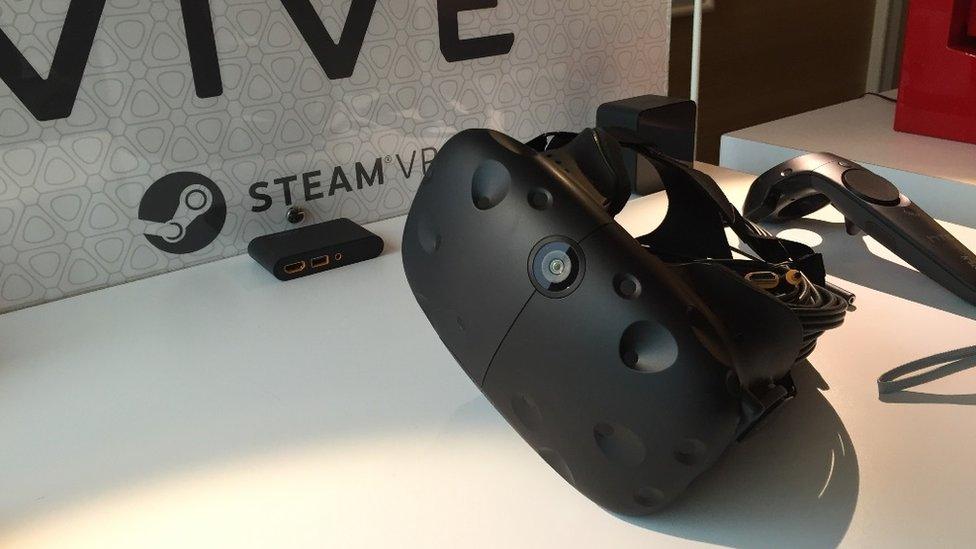
The Vive features a front-facing camera so the user can see what's around them when necessary
Taiwanese tech firm HTC has revealed changes to its forthcoming virtual reality headset at the CES tech show.
The Vive's release was delayed after what chief executive Cher Wang described as a "very, very big technological breakthrough".
This has been revealed to be a camera system that allows the wearer to see objects in the physical room around them, helping to avoid collisions.
Some have questioned whether the device will be affordable, though.
By pressing a button on a handheld controller, the user can see objects near them ghosted in to the virtual reality environment.
This merging of physical and digital is intended as a safety feature - and a solution to one of the practical problems facing VR.
HTC plans to launch the Vive in April.
Pre-orders for a rival PC-powered headset, the Rift by Oculus, are set to begin on Wednesday. However, the Facebook-owned firm has yet to reveal when they will be delivered.
The other major headset on show at the Vegas event is the PlayStation VR, which works with Sony's games console.
'New era'
"For too long, the promise of virtual reality has been little more than a promise," said Ms Wang.
"Today we stand on the precipice of a new era. Vive is creating a world where the only limit is human imagination."
The headset's improvements over a version revealed in February include:
A front-facing camera, so the user can view the world around them when desired
A redesign of the headset and strap to make them more comfortable
Interchangeable foam inserts and "nose gaskets" to better fit the shape of the wearer's face
A brighter display with better clarity than before
Handheld controllers feature a range of updates including textured buttons, grip pads and softer edges
HTC would not reveal any details on pricing, but when pushed it acknowledged the cost might prove a barrier to mass-market adoption.
"It is a very good experience but if you already have, say a PlayStation, then PlayStation VR is going to be a quicker and cheaper way to get into it," said Stuart Miles, editor of tech site Pocket-lint, external.

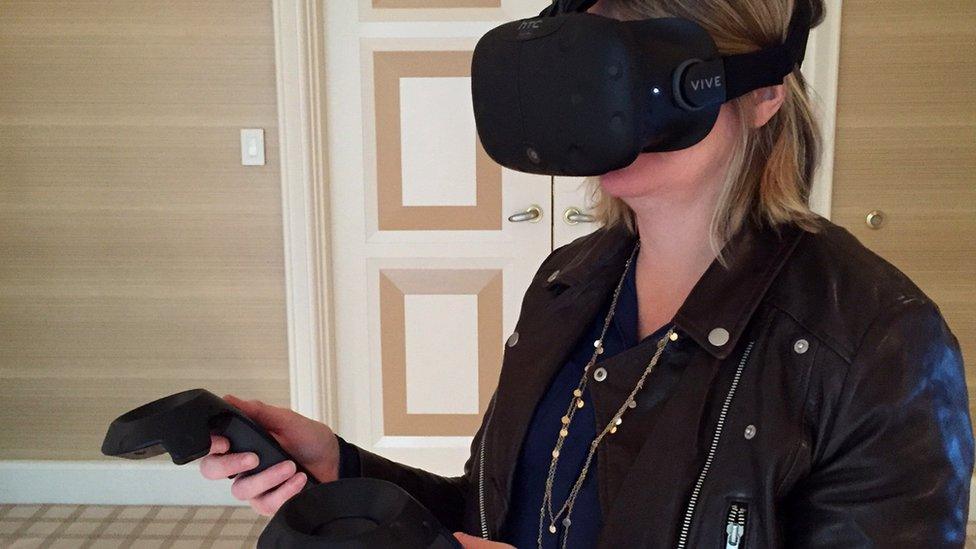
The proof is in the pudding when it comes to VR - is it actually a good experience for the user?
Analysis: Jane Wakefield, Technology reporter
Today, in Vegas, I stood on the deck of a shipwreck and watched a blue whale float past - all in the comfort of a hotel suite.
I was trying out HTC's new, improved virtual reality headset and it was quite an experience.
The ability for 360-degree viewing makes it very immersive and the content is compelling. But whether I would invest in it is another matter.
At Christmas, my children played around with the much cheaper and currently available Google Cardboard, external and while that is a totally different experience it seemed to satisfy their immediate VR needs.

Vying for VR
Competition in the virtual reality market is primed to be fierce in 2016, according to Michael Goodman of Strategy Analytics.
"This is like a bunch of competitors, right at the starting line, eying each other just before the gun goes off," he said.
Attempts to popularise VR flopped in the 1990s, but Mr Goodman said that a positive sign this time was that several content-producing firms had already announced VR titles and franchises before the headsets had gone on sale.
"That's really unprecedented in the media entertainment space," he added.

The HealthBox includes three fitness related devices
Fitness gadgets
HTC also unveiled a trio of health-related devices as part of a tie-up with the fitness specialist Under Armour.
They will be sold together for $400 (£270) in a product titled HealthBox.
The first is the UA Band, an all-day wristband for tracking activity, exercise and sleep.
The second, the UA Heart Rate monitor, is designed to be strapped to the wearer's chest during workouts in order to detect heartbeats and calculate calories burned.
Finally, there is the UA Scale, a wi-fi connected set of scales which sync with a companion app so that users can track weight fluctuations over time.
"There is nothing amazingly new here," remarked Mr Miles.
"Rather, it is the sum of its parts and some will like the ease of a $400 box set for health and fitness."
Read more of our CES articles and follow the BBC team covering the show on Twitter, external.
- Published4 January 2016
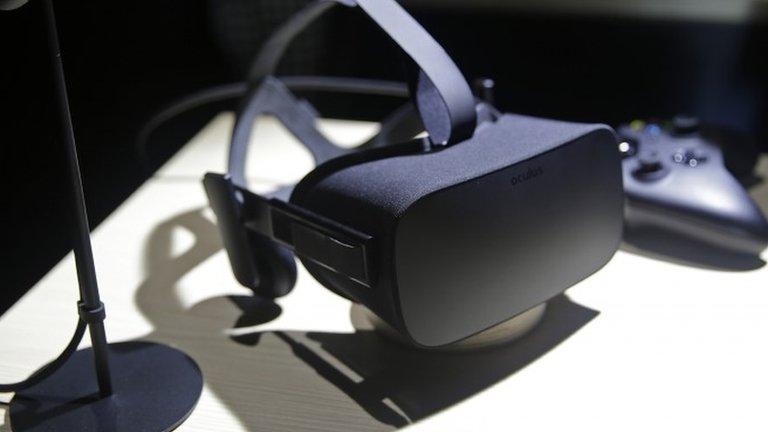
- Published4 January 2016
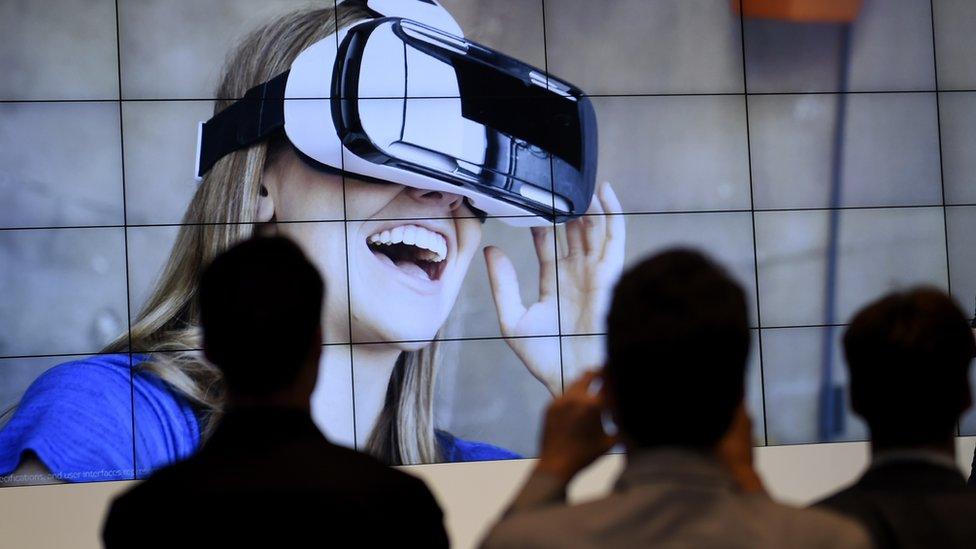
- Published1 January 2016
- Published4 March 2015
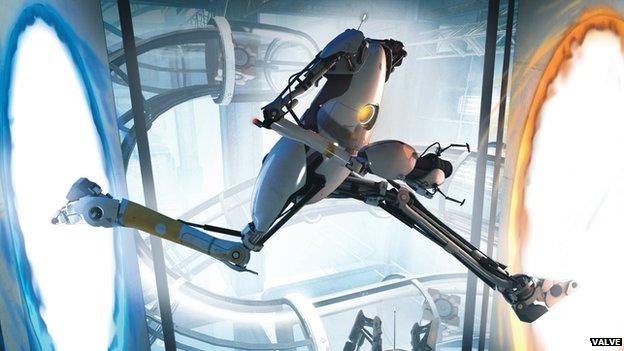
- Published2 March 2015
